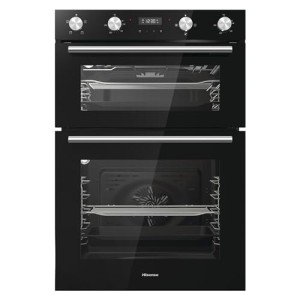Understanding Built-In Cookers: A Comprehensive Guide
Built-in cookers are progressively becoming a staple in modern kitchen areas, providing convenience, performance, and smooth design. These integrated kitchen appliances mix flawlessly with cabinetry, supplying a structured appearance while making the most of space effectiveness. In this article, we will explore the numerous types of built-in cookers, their advantages, features, and installation considerations.
What Are Built-In Cookers?
Built-in cookers are kitchen appliances that are set up directly into the cabinets of a kitchen rather than being freestanding. They can be included as either an oven or a hob, and they can be found in numerous types to meet the varied requirements of home cooks and expert chefs alike.
Kinds Of Built-In Cookers
Built-in cookers normally fall into 2 primary classifications: built-in ovens and built-in hobs. Below is a breakdown of each type:
| Type | Description |
|---|---|
| Built-In Ovens | These are generally housed within a cabinet and can be electric or gas designs. They can be found in different configurations, consisting of single, double, and microwave-convection combinations. |
| Built-In Hobs | These are cooking surface areas created for combination within a counter top. gas hob electric oven built-in can be gas, electric, or induction designs, featuring multiple cooking zones. |
Benefits of Built-In Cookers
Built-in cookers provide a number of benefits that make them a popular option for contemporary families and professional kitchens alike. Some key benefits consist of:
- Space Efficiency: Built-in cookers make the most of kitchen space by permitting for more structured layouts and the ability to install other cabinetry around them.
- Aesthetic Appeal: They use a smooth, integrated look that can enhance the total aesthetic appeals of the kitchen.
- Improved Functionality: Many built-in cookers come with sophisticated cooking functions, including self-cleaning options, convection settings, and wise technology.
- Personalization Options: They allow property owners to produce a cohesive kitchen style tailored to their needs.
Functions of Built-In Cookers
When considering built-in cookers, there are several functions to consider. Here are some popular choices:
- Convection Cooking: Many built-in ovens include convection cooking, which utilizes a fan to distribute hot air, making sure even cooking.
- Self-Cleaning Options: This function saves time and effort in preserving the oven's tidiness by using high temperatures to burn food residues.
- Smart Technology: Some modern-day designs feature Bluetooth or Wi-Fi connectivity, permitting users to manage their appliances remotely through mobile apps.
- Numerous Cooking Zones: For built-in hobs, different cooking zones make it possible for users to prepare numerous meals concurrently.
Factors to consider for Installation
While built-in cookers have lots of advantages, correct setup is vital to optimizing their performance and guaranteeing safety. Here are a couple of points to consider:
- Kitchen Layout: Ensure that the cooker fits well with the total kitchen style, including cabinets and countertops.
- Electrical and Gas Requirements: Check compatibility with your home's electrical or gas supply. Consulting a professional is suggested to make sure safe setup.
- Ventilation Needs: For gas cookers or specific kinds of built-in hobs, sufficient ventilation is essential to prevent the buildup of damaging gases.
- Height and Accessibility: Install the cooker at an ergonomic height for ease of use, particularly for those with movement concerns.
Popular Brands of Built-In Cookers
There are numerous reputable brand names that make top quality built-in cookers. Below are a few of the most recognized names in the industry:
- Bosch: Known for ingenious technology and long lasting designs, Bosch offer a range of built-in ovens and hobs.
- Samsung: A leader in smart innovation, their built-in cookers come with advanced features.
- Miele: Specializes in premium appliances, offering superior efficiency and elegant styles.
- Whirlpool: Offers a series of trusted and accessible built-in cooking solutions.
FAQs About Built-In Cookers
Q1: Are built-in cookers more pricey than freestanding designs?
A: Generally, built-in cookers tend to be more pricey due to their design intricacy and setup requirements. Nevertheless, they typically provide additional functions and boosted aesthetic appeals.
Q2: Can I install a built-in cooker myself?
A: While some installation may be uncomplicated, it's suggested to work with a professional to ensure security, especially with gas and electrical connections.
Q3: How do I clean up a built-in cooker?
A: Most built-in ovens include self-cleaning alternatives. For built-in hobs, regular cleansing with appropriate items is recommended to preserve efficiency and appearance.
Q4: Do built-in cookers have a guarantee?
A: Yes, the majority of built-in cookers included manufacturer warranties. It's necessary to examine the particular terms when purchasing.
Q5: Can built-in cookers be moved after setup?
A: While it's possible to move a built-in cooker, it frequently requires expert assistance and may demand adjustments to cabinets.
Built-in cookers stick out for their ability to combine functionality with aesthetics, making them a popular option in both modern and conventional kitchen areas. With various alternatives readily available, homeowners can pick the designs that best fit their cooking styles and kitchen designs. Whether one choose the most recent smart technology or a more classic style, built-in cookers are sure to improve the cooking experience.
For those wanting to update or create a new kitchen, investing in built-in cookers can be a robust decision that transforms the area and enhances cooking endeavors.

